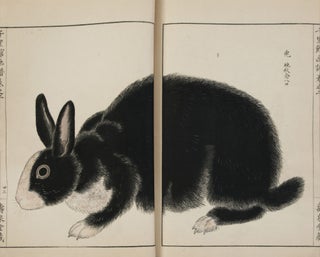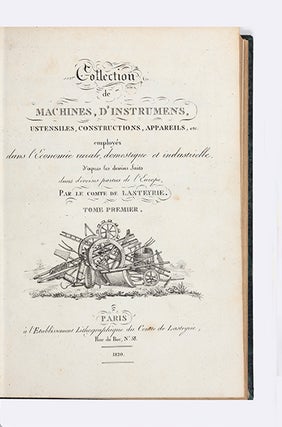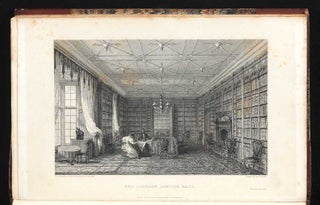![Item ID: 8117 Shi yun hui bian 十韵彚編 [Compilation of Ten Rhyme (Books)]. Fu 劉復 LIU, Jiangong 魏建功, WEI, Changpei 羅常培 LUO, or Bannong 半農.](https://jonathanahill.cdn.bibliopolis.com/pictures/8117.jpg?width=768&height=1000&fit=bounds&auto=webp&v=1649499193)
An Important Milestone
Shi yun hui bian 十韵彚編 [Compilation of Ten Rhyme (Books)].
1 p.l., 1-114 pp.; 115-316 pp.; 317-494 pp. Three vols. Small folio, orig. brown wrappers, titles in manuscript on upper covers, orig. stitching. Beijing: Guo li Beijing da xue chu ban zu, [1935].
First edition of an important work for historical linguistics. This is a collection of rare early rhyme books (yunshu 韻書), a kind of phonological dictionary that developed in China beginning in the medieval period. Their initial purpose was to facilitate the writing of Chinese regularized verse, whose meter is based on the rhyme and pitch tone of Chinese characters. This type of verse is associated with the literature of the Tang dynasty, but it remained written throughout the imperial period. Writing verse was an integral part of elite sociability, and it was periodically tested in the civil service examinations, which many elite males aspired to take. The pronunciation of the Chinese dialects changed substantially after the Tang period, but the poetic meter remained based on the phonology of some form of Tang Chinese (even if the language of poetry was arguably partially artificial). To rhyme correctly in poetry, writers therefore needed to consult rhyme books, which were published in great numbers as a result.
In the late imperial period, rhyme books also came to be used as sources for the history of the Chinese language. Through their study, scholars attempted to recover the phonology of earlier forms of Chinese. The medieval rhyme books continued to be used this way in the 20th century, when the tradition of classical scholarship that flourished in late imperial China merged with the comparative linguistics that had developed in Europe in the 19th century for the study of Indo-European languages. This brand of scholarship was then applied to previously unknown or little-studied rhyme books recovered by archaeologists and bibliographers. Shi yun hui bian is an important milestone in these efforts recover and present sources for linguistic research, and is a work of historical phonology and critical bibliography in its own right.
This work was compiled by three prominent linguists: Fu Liu 劉復 (known as Liu Bannong 劉半農, 1891-1934), Wei Jiangong 魏建功 (1901-80), and Luo Changpei 羅常培 (1899-1958). Their book contains nine rare rhyme books or rhyme book fragments collated against Guangyun 廣韻 [The Expanded Rhymes], a Song dynasty rhyme book. Guangyun was a well-known and well-studied book in this period, so it could conveniently provide the phonological framework against which the other texts were measured. Several editions of Guangyun were used for the compilation of this book, which is thus also a critical study of Guangyun. The nine texts to which Guangyun is compared are various early printed and manuscript versions of Qieyun 切韻 [The Spelled Rhymes]. This pioneering book was compiled by Lu Fayan in 601 CE, but it was only recovered and brought to the attention of scholars in the 20th century, in part through the work under discussion here.
The ten books of the title refer to:
1-3. Three fragmentary copies of Qieyun. Wang Guowei, another very prominent Republican-era scholar, had copied these fragments by hand in the British Library, where they had been taken from Dunhuang by Aurel Stein.
4. An edition of Qieyun published during the Five Dynasties period (907-979 CE), held at the BnF.
5. A manuscript edition of Qieyun from the Dunhuang collection in Paris.
6. A Tang manuscript edition of Qieyun transcribed from the copy at the imperial palace in Beijing.
7. A Tang manuscript edition of Qieyun in a private collection.
8. A fragmentary manuscript edition of Qieyun held in Berlin and stemming from excavations in Turfan.
9. A Tang manuscript Qieyun fragment from a Japanese collection.
10. And finally, Guangyun.
Shi yun hui bian was important for historical linguistics in the 20th century, and at least one scholarly monograph has been dedicated entirely to it (published in 1988).
Fine set.
This summary is based on the excellent description by Fudan University professor Yang Jianqiao.
References
Yang Jianqiao 楊劍橋. “Shiyun huibian” 十韻彙編. In Zhongguo xueshu mingzhu tiyao 中國學術名著提要. Vol. 6. Shanghai: Fudan daxue chubanshe, 2019.
Price: $1,750.00
Item ID: 8117




